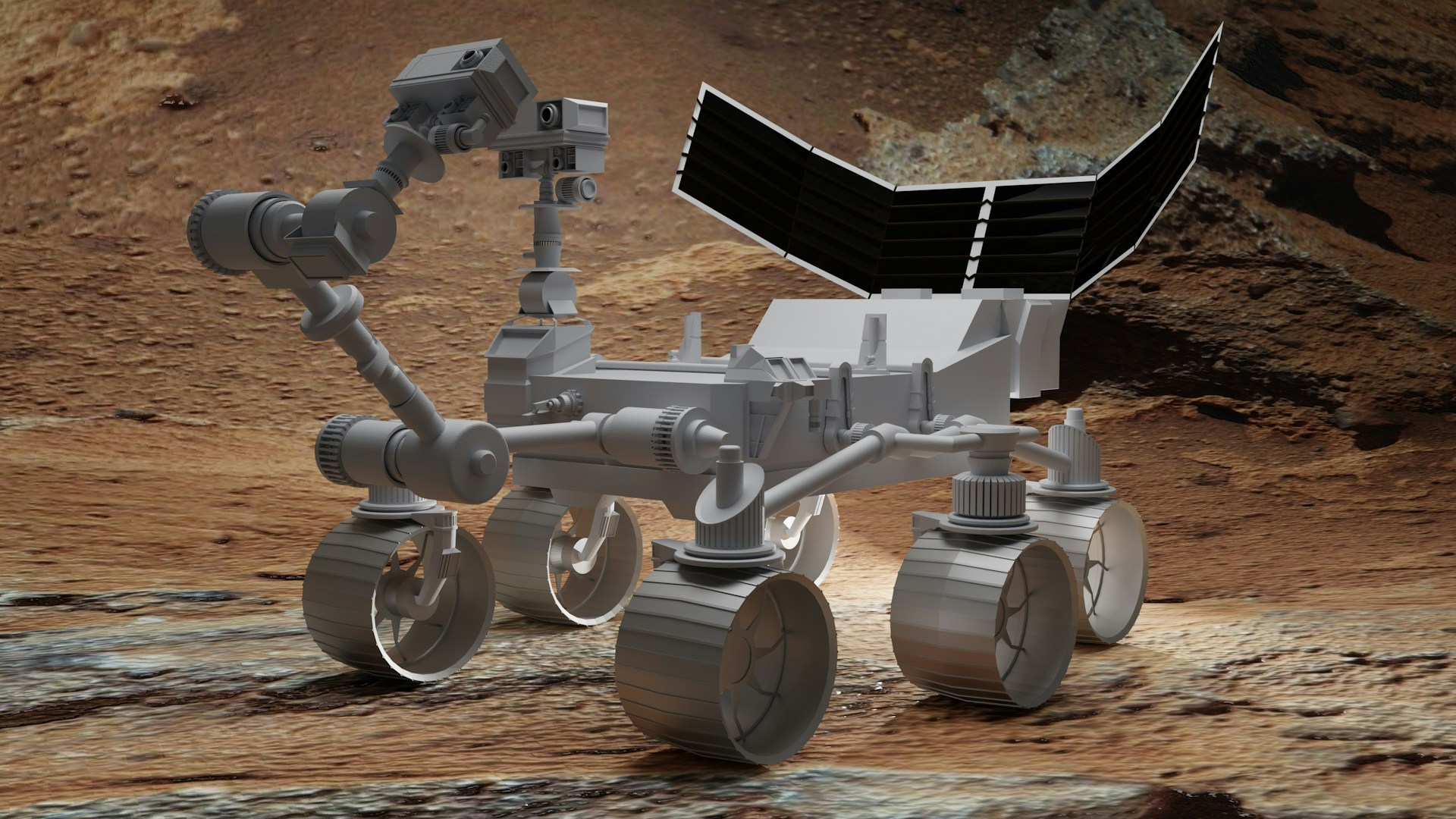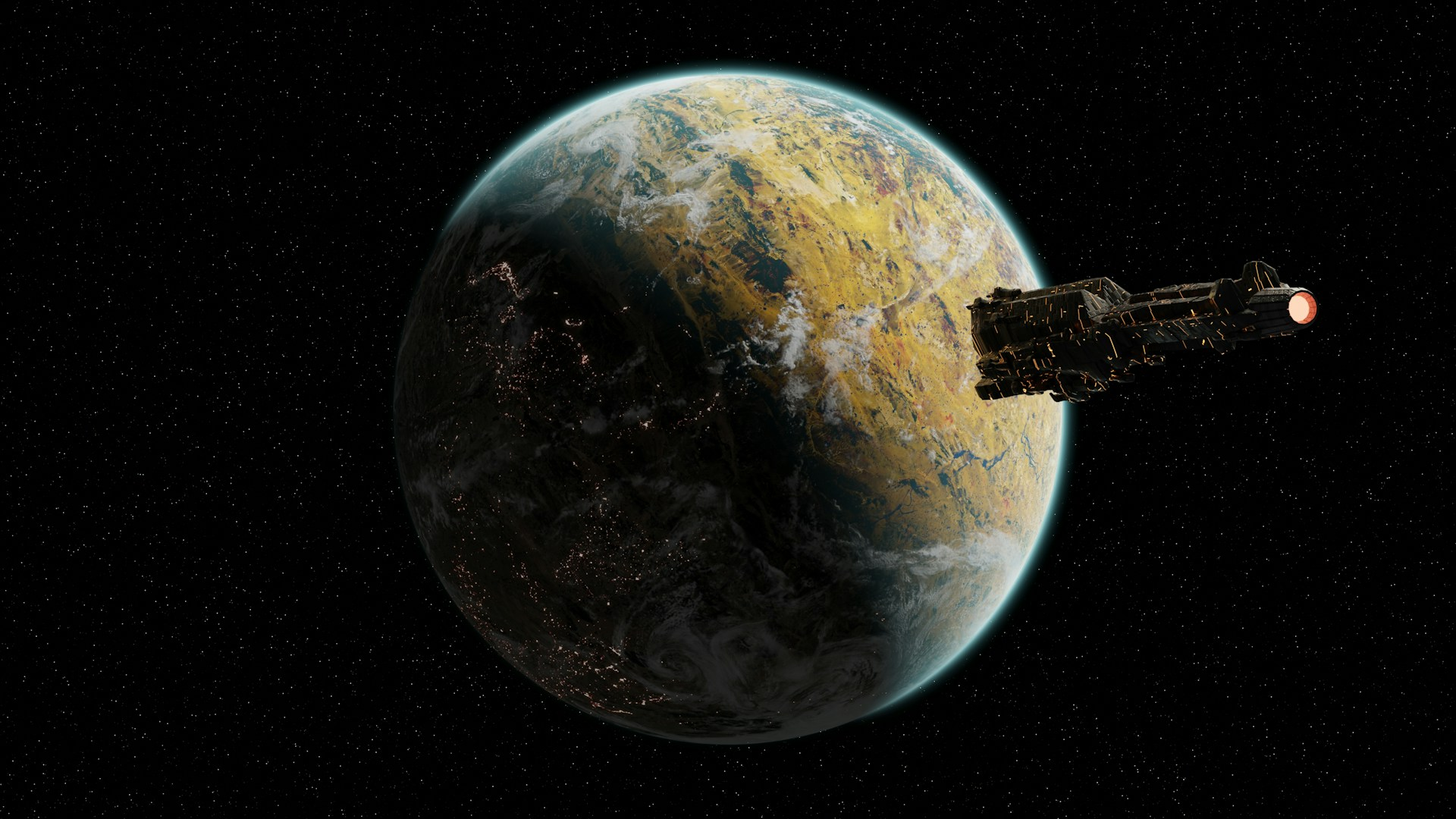By Lou Farrell
Transportation to Mars requires more than a spaceship. Science fiction writers, astrophysicists and engineers have speculated for decades about what technologies could be viable for traveling to and surveying other planetary surfaces. Exploratory vehicles have already paved the way, demonstrating what specifications, materials and expenses are needed. What were some pioneering machines, and what could the future hold for planetary exploration?

Source: Photo by Sufyan on Unsplash
Existing Mars Exploration Devices
Any predictions about future transportation tech will be born from previous developments. Innovations like rovers and landers lay the foundation for what will come. These trademark devices will inspire generations of prospective interplanetary travelers.
The Mars Global Surveyor
Orbiters are vital technologies because they map surfaces and measure magnetism and gravity on other planets. The Mars Global Surveyor operated for 10 years, inspiring future models. It contained a thermal emission spectrometer to observe minerals, a relay system to communicate with other landers and a laser altimeter to collate topographical information.
The Phoenix Lander
This 350-kilogram lander was the reason why humans discovered ice on Mars. It did this with a robotic arm, which worked alongside an imager capable of creating panoramic images. It could analyze eight ice and soil samples at once in its thermal and evolved gas analyzer.
The Mars Pathfinder Lander
In 1997, the Mars Pathfinder Lander — also known as Discovery 1 — worked alongside the Sojourner rover. It proved that lower-cost exploration methods could assess Martian geology and atmospheric conditions. Its heat shield allowed it to go directly into the Martian atmosphere, using a parachute to slow its descent.
The Mars Express
The Mars Express launched in 2003 and had a long orbital period of seven hours. It determined the composition of the minerals and atmosphere in impressive detail. To this day, it still sends Earth images and data about Mars. It had more advanced radar systems to see subsurface details and a higher-quality stereo camera with a 10-meter resolution.
Mars Atmosphere and Volatile Evolution (MAVEN) Orbiter
MAVEN focused on the atmosphere more than the ground. It researched the ionosphere, atmosphere and the planet’s solar winds. It helped humans understand why Mars loses atmospheric gases. It is still in orbit and has been analyzing the same phenomena since 2013.
Rovers in Their Many Forms
Rovers are some of the most iconic space travelers alongside humans. They take incredible photographs, grab resources for analysis and inspire generations to create better equipment to travel farther. These are some of the most influential:
- Sojourner: This retired rover studied Martian soil, weighed around 10 kilograms and had a travel distance of 500 meters.
- Spirit: An exploratory device, Spirit weighed over 185 kilograms and got stuck in the ground, ceasing communications in 2010.
- Curiosity: A probe meant to find microbes and other proof of life, Curiosity helped determine the planet’s habitability. It weighs around 900 kilograms and is still active and roaming the Gale Crater.
- Opportunity: A similar rover to Spirit in spec and purpose, Opportunity lost contact with Earth in 2018 after a dust storm.
- Perseverance: This 1,000-kilogram life-seeking rover collected rocks and soil to bring to Earth. It is in the Jezero Crater, where samples continue to be collected.
Speculative Suggestions for Future Transportation on Mars
Behind closed doors, experts are already developing ideas for future transportation on Mars. Science fiction tales may or may not inspire many hypotheses, but the universe has many undeniably captivating transportation blueprints.

Source: Photo by Andrej Sachov on Unsplash
Martian Railways
A train on the surface of Mars is already under consideration. NASA’s Innovative Advanced Concept program is uncovering the viability of using magnetic robots on tracks to cart materials, assisting humans in moving resources. Researchers say it would be essential to establish a sustainable base on another planet.
The idea will come to fruition if engineers can maintain the tracks cheaply and consistently. Exposure to extreme temperatures erodes and deforms railway tracks, and no habitat is more extreme on human-created technology than a foreign planet’s pressures.
Nuclear Thermal Propulsion (NTP)
Spaceships using NTP technology can carry larger payloads than chemical rockets. This means they could transport more people and resources to Mars in one trip. NTP is one of the most practical theoretical transportation techniques since it works via nuclear fission — something humans know how to do. There is already support from government agencies like the U.S. Department of Energy, but more research on controlling radioactive contaminants is vital.
The Space Exploration Vehicle (SEV)
Imagine taking an off-road vehicle on the surface of Mars. NASA’s SEV is a pickup-style vehicle capable of supporting two astronauts for two weeks. The concept featured crab-style steering mechanisms, 12 wheels and expert handling. Astronauts could take the most exciting road trip across the surface of Mars in style. Unfortunately, NASA never fully realized the SEV, ending work in 2015. However, this does not mean it could not make a comeback or inspire a similar future project.
Space Elevators
An elevator can take hotel residents up 50 stories, so theoretically, sturdy infrastructure could jettison humans into geostationary orbit. The space elevator has been in people’s minds for over a century, and it could make the stars far more accessible. Engineers could craft one from a reliable planetary object to connect to Mars.
Security and construction are concerns, as keeping people safe from space debris would require equally lightweight yet indestructible materials. An entire organization called the International Space Elevator Consortium is dedicated to trying to make this dream a reality.
Wormhole Travel
In the far-distant future, transportation on Mars may not need a vehicle. Wormholes have been a popular fixture of space fantasy for a long time — a theoretical shortcut between distant parts of the universe, like a portal. Intergalactic travel could happen in seconds.
Unfortunately, the existence of wormholes is still unproven. Scientists often see the potential for wormholes in equations and the theory of relativity. It is not impossible, but even if it became a usable travel method, it would require humans to manipulate negative energies to combat the chances of the wormhole collapsing under its gravity.
Rockets in Their Many Forms
A rocket is the most obvious transportation method to Mars, and many variations of the traditional ship have been imagined in stories and labs alike.
One is the variable-specific impulse magnetoplasma rocket. It has a radio wave-powered thruster that catalyzes the plasma. It is a usable method promising high efficiency. Fusion rockets are also a potential option but are in the early stages of development and global scaling, similar to fission.
Finally, there is the more experimental idea of antimatter spaceships. The engine would destroy matter to propel the machine. It would be immensely energy-dense, but it is unsafe and expensive to store and use antimatter that way.
The New Frontier in Planetary Transportation
Some of these ideas sound like the work of fiction writers. However, the amount of knowledge humanity has yet to discover about the universe is seemingly infinite. Countless surprises await Earthlings, even travel solutions that are borderline magical.
Wormholes may or may not exist, just as much as antimatter may or may not be usable. Any time the possibility of these technologies feels impossible to scientific minds, all people can do is remember when it felt impossible to plant a flag on the Moon and adjust their perspective.
Author’s Personal Note: I was inspired to pursue this topic during a recent play-session of the planet-exploring video game “Mass Effect”. It really got my mind spinning about the possibilities of advanced transportation developments for planetary exploration. Something about riding a train across the surface of Mars, or traveling on a space elevator…they’re compelling mental images, aren’t they?
On a semi-related note, were you aware that the Red Planet Bound Blog now has a snazzy new logo? Check it out:
